Abstract
Responding by pigeons on one key of a two-key chamber alternated the color of the second key, on which responding produced food according to a variable-interval schedule of reinforcement. From time to time, reinforcement would be available for a response, but in the presence of a particular stimulus, either red or green light on the key. Red or green was chosen irregularly from reinforcement to reinforcement, so that a proportion of the total number of reinforcements could be specified for each color. Experimental manipulations involved variations of (1) the proportions for each color, (2) changeover delay, or, alternatively, (3) a fixed-ratio changeover requirement. The main findings were: (1) relative overall rates of responding and relative times in the presence of a key color approximated the proportions of reinforcements obtained in the presence of that color, while relative local rates of responding changed little; (2) changeover rate decreased as the proportions diverged from 0.50; (3) relative overall rate of responding and relative time remained constant as the changeover delay was increased from 2 to 32 sec, with reinforcement proportions for red and green of 0.75 and 0.25, but they increased above 0.90 when a fixed-ratio changeover of 20 responses replaced the changeover delay; (4) changeover rate decreased as the delay or fixed-ratio was increased.
Full text
PDF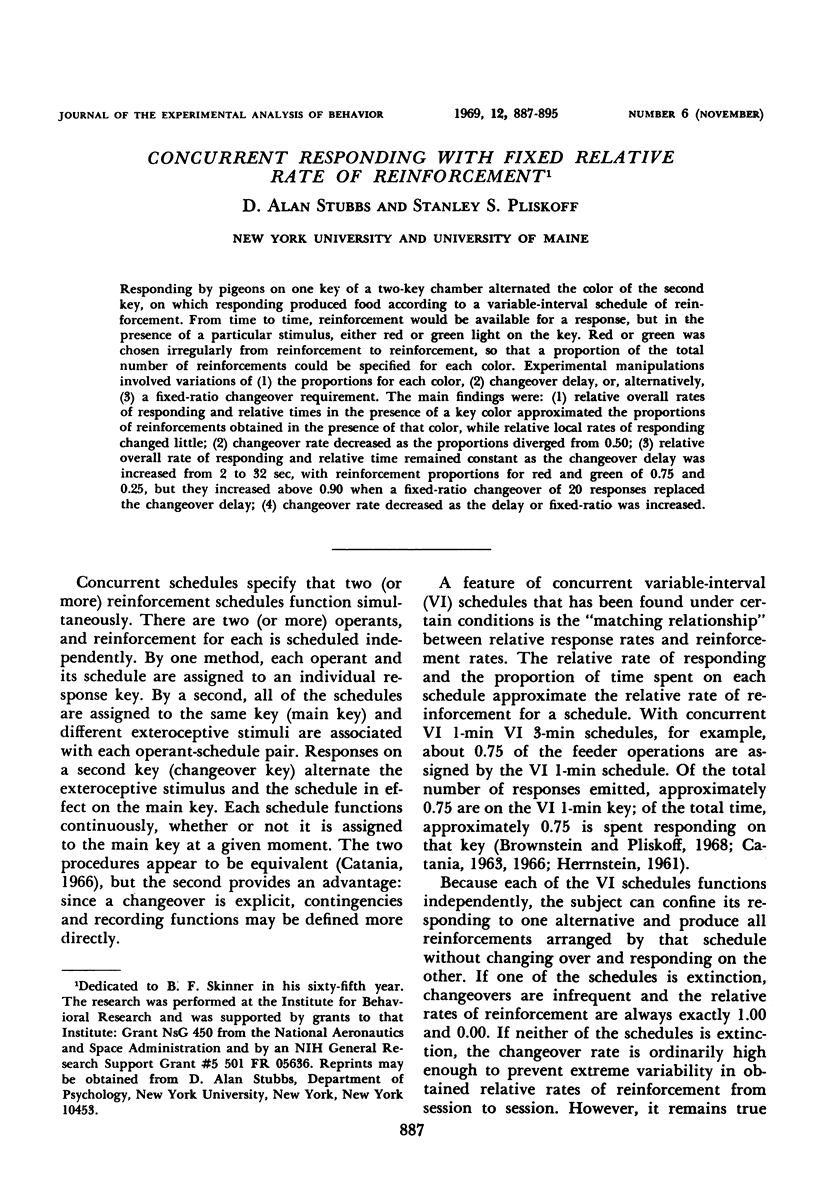
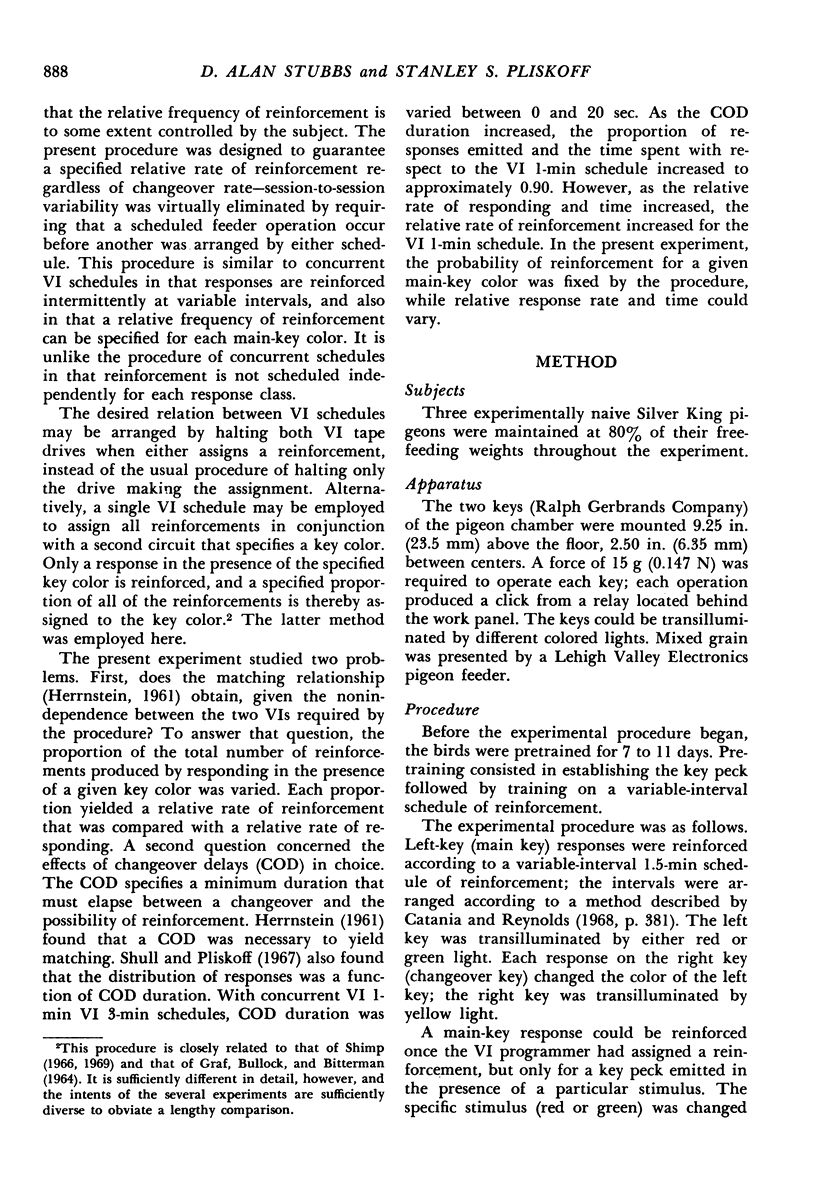
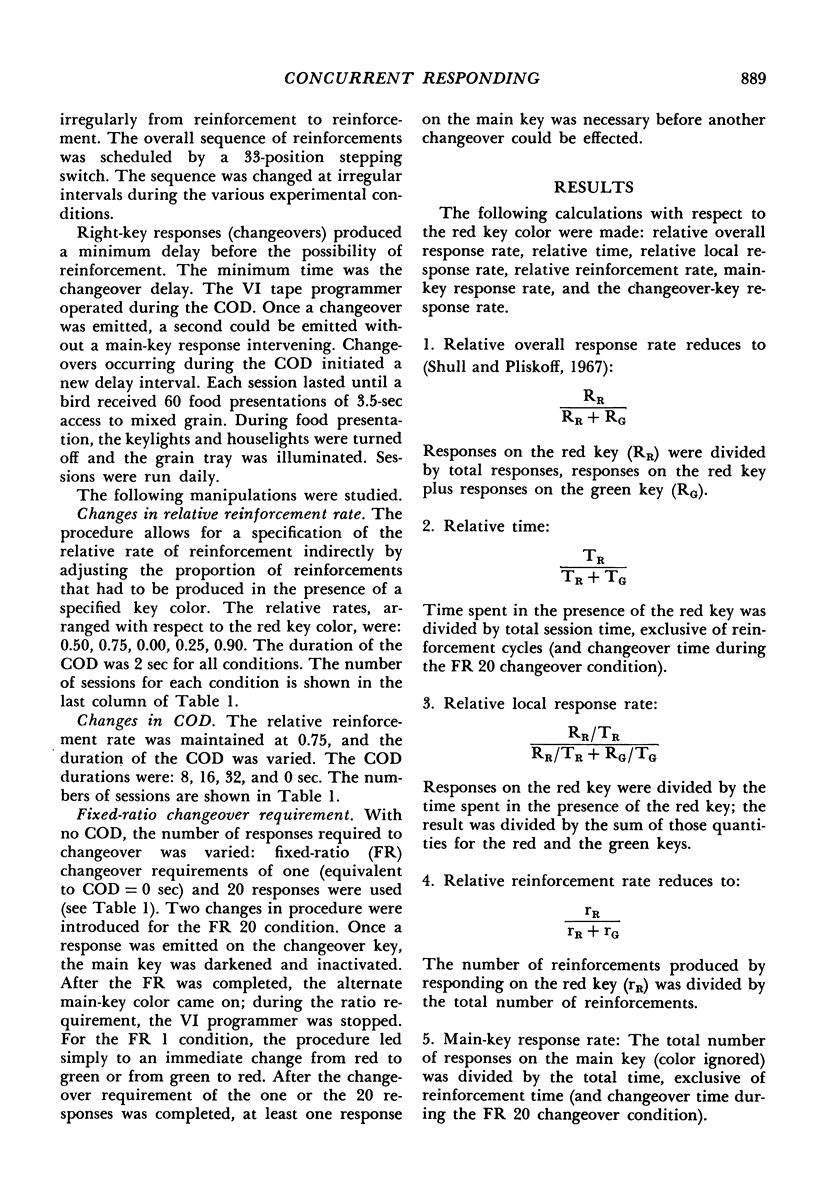
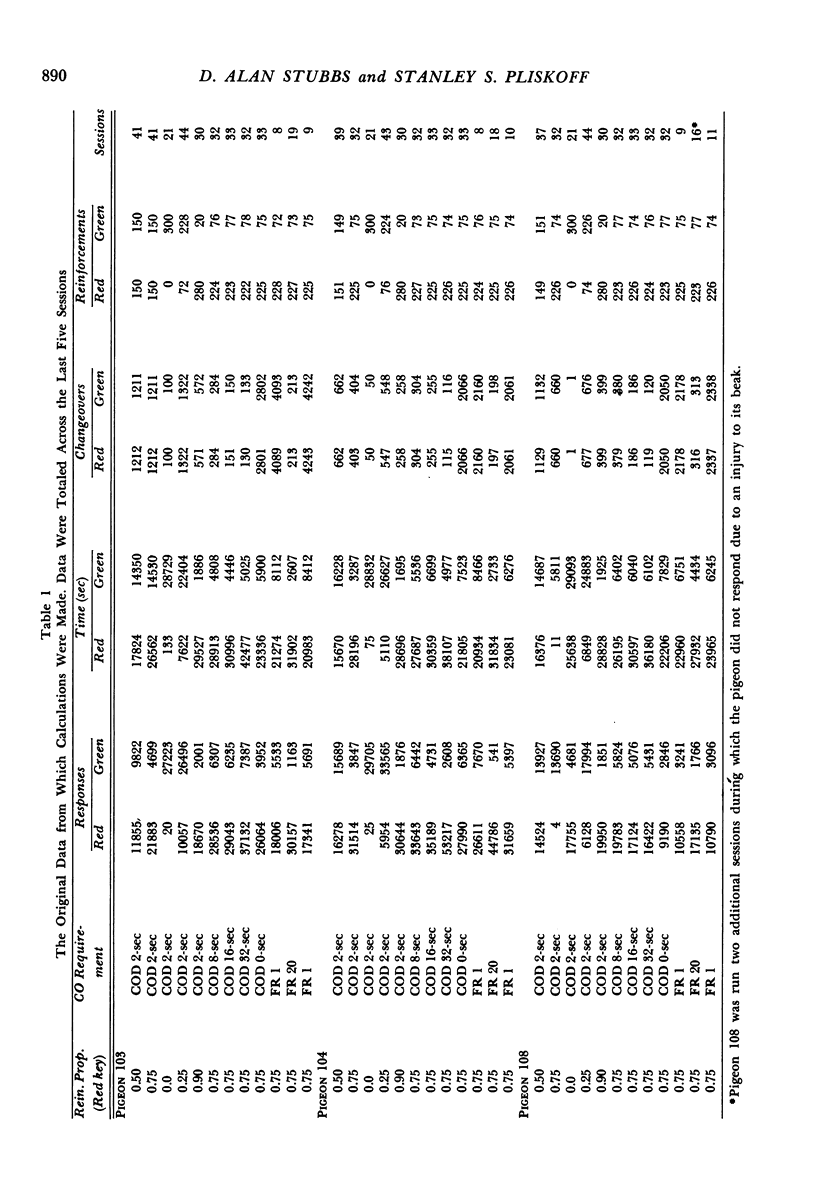
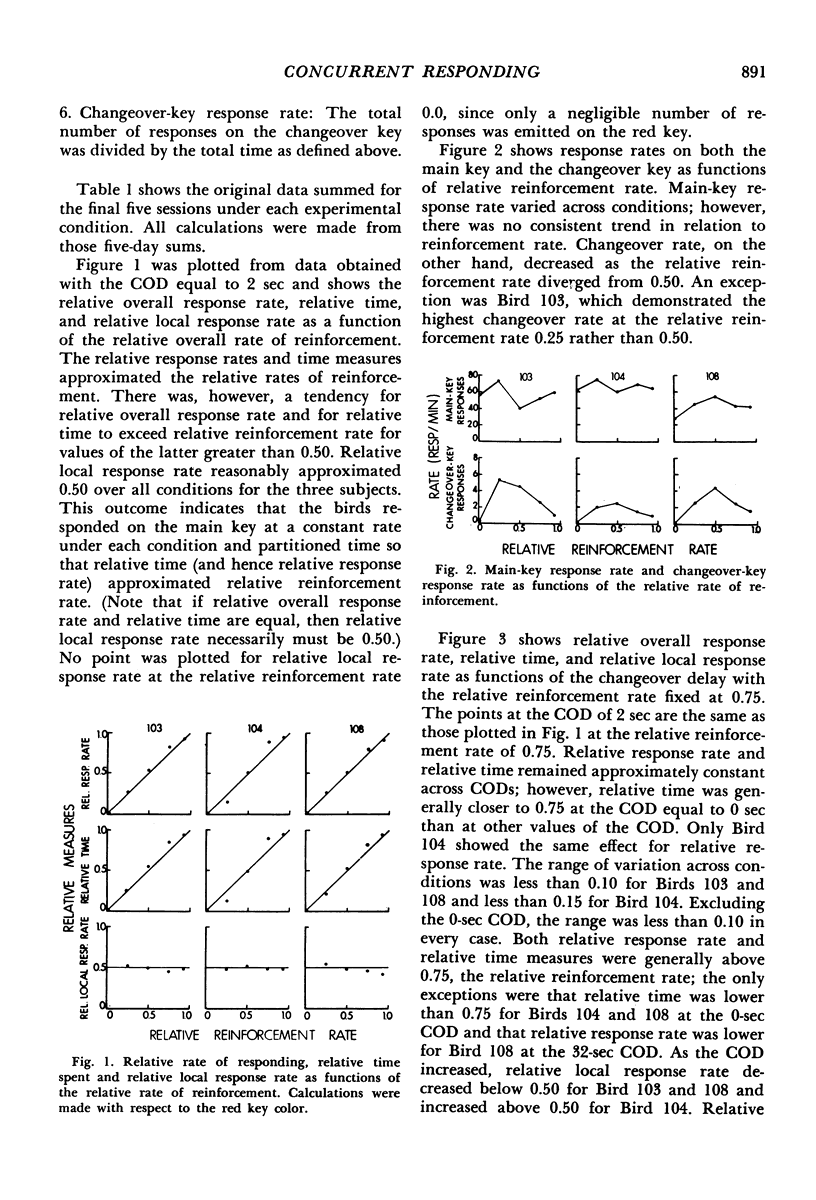
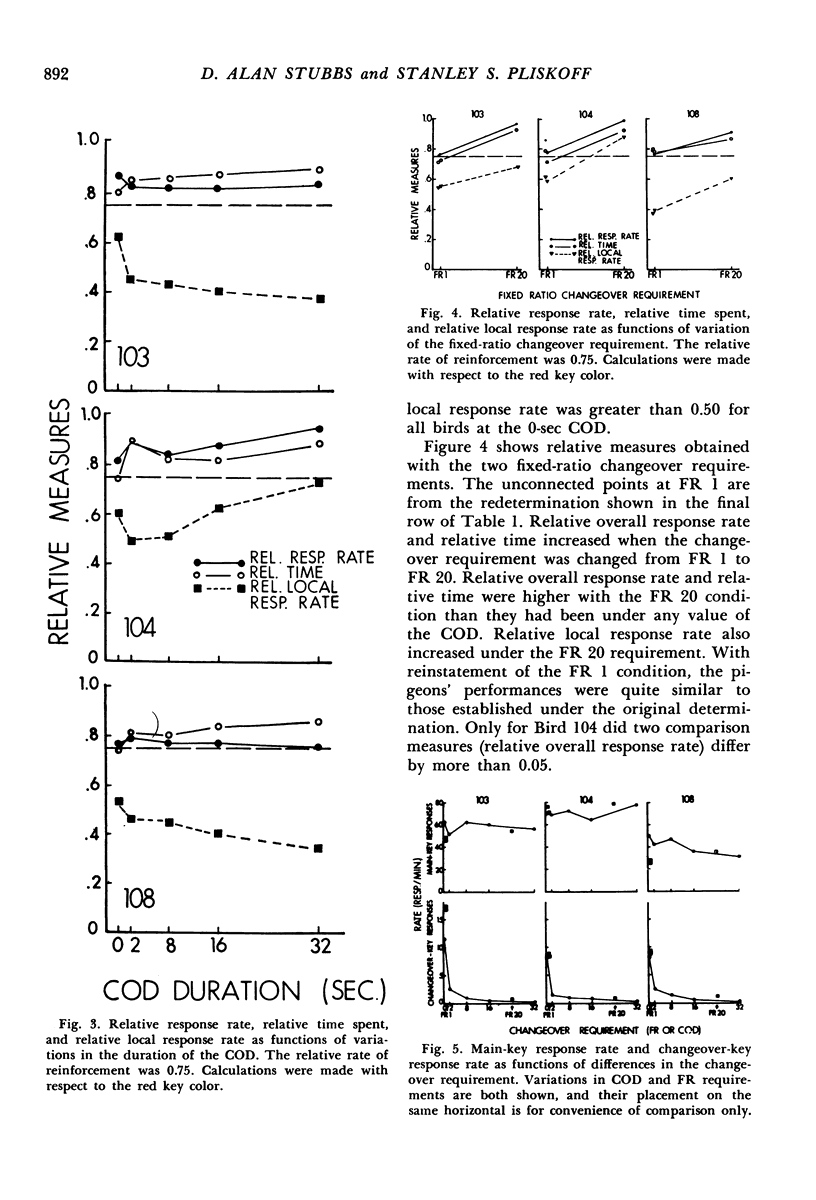
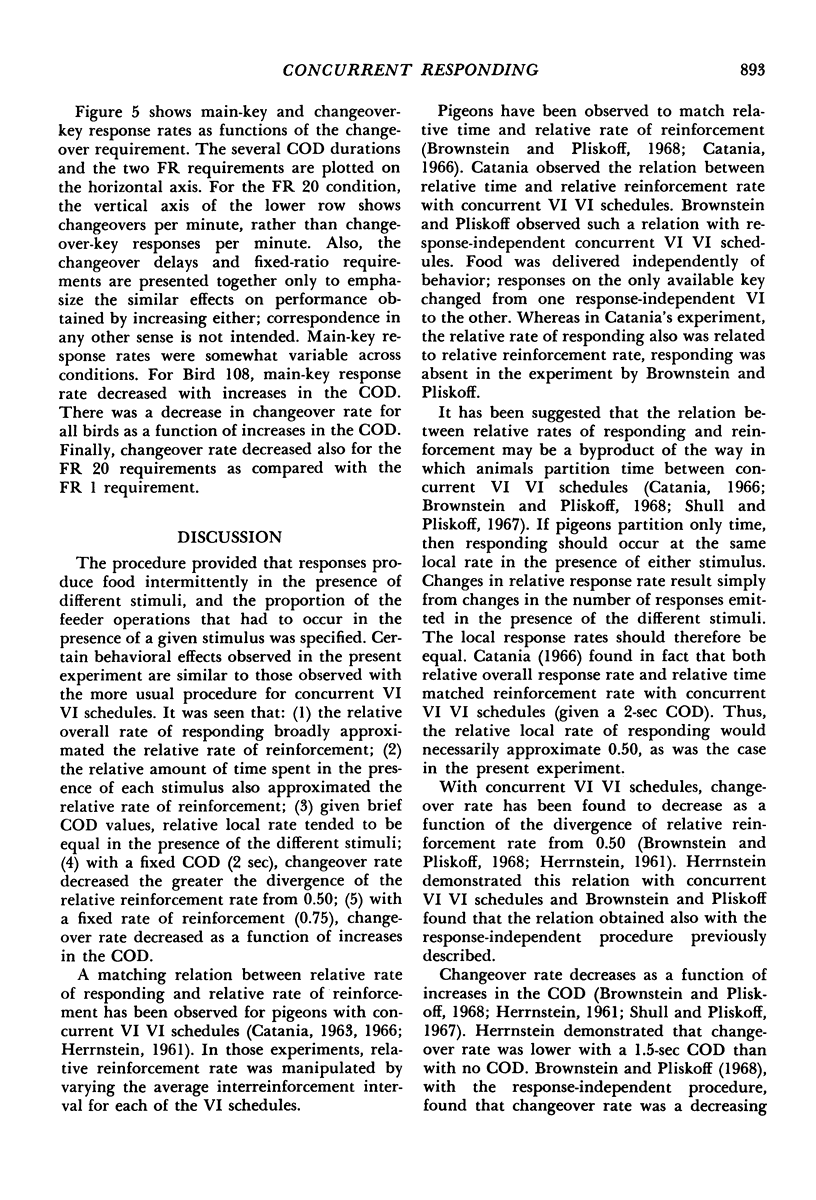
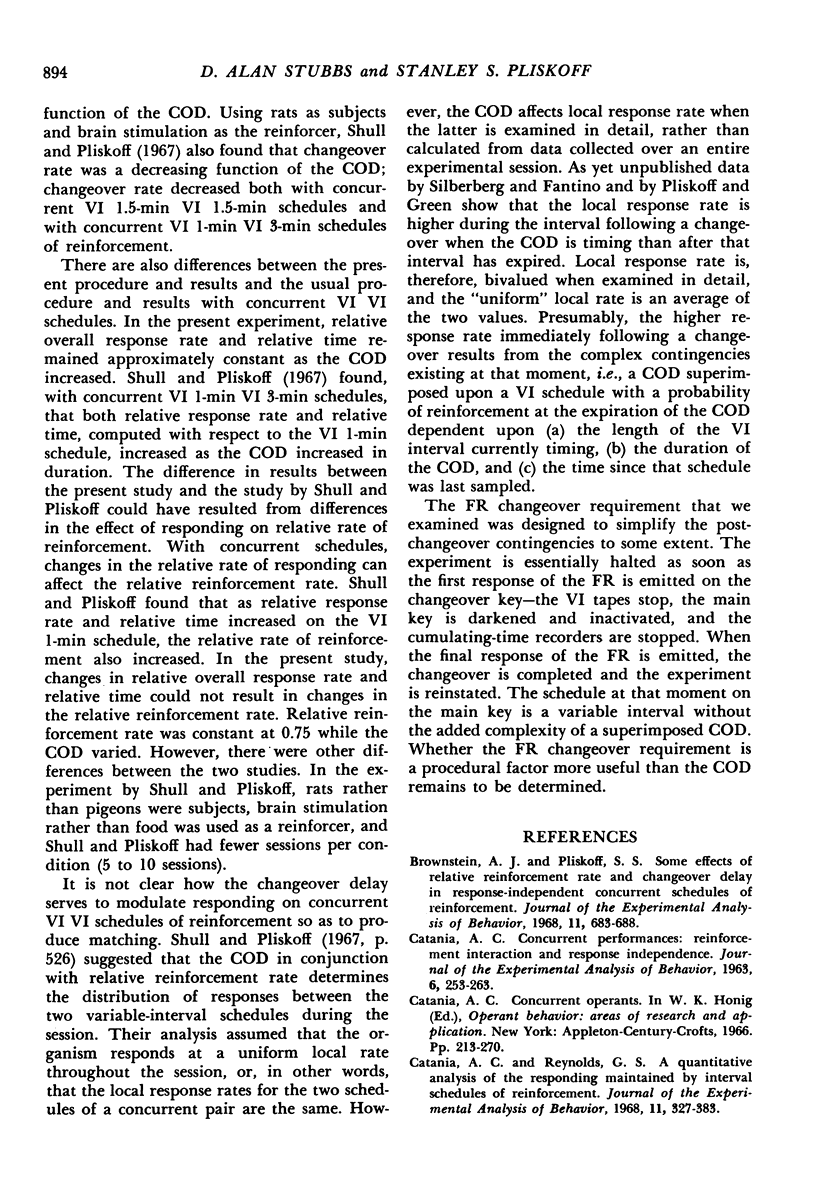
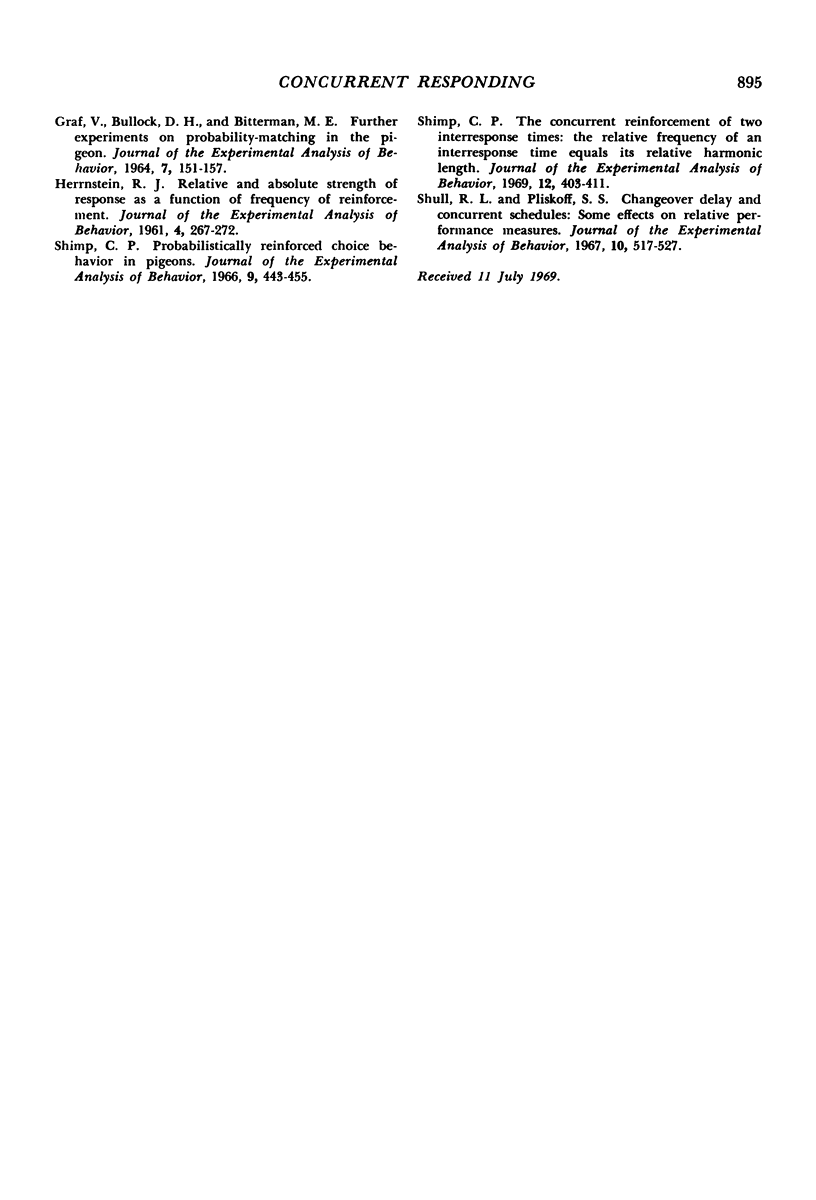
Selected References
These references are in PubMed. This may not be the complete list of references from this article.
- Brownstein A. J., Pliskoff S. S. Some effects of relative reinforcement rate and changeover delay in response-independent concurrent schedules of reinforcement. J Exp Anal Behav. 1968 Nov;11(6):683–688. doi: 10.1901/jeab.1968.11-683. [DOI] [PMC free article] [PubMed] [Google Scholar]
- CATANIA A. C. Concurrent performances: reinforcement interaction and response independence. J Exp Anal Behav. 1963 Apr;6:253–263. doi: 10.1901/jeab.1963.6-253. [DOI] [PMC free article] [PubMed] [Google Scholar]
- Catania A. C., Reynolds G. S. A quantitative analysis of the responding maintained by interval schedules of reinforcement. J Exp Anal Behav. 1968 May;11(3 Suppl):327–383. doi: 10.1901/jeab.1968.11-s327. [DOI] [PMC free article] [PubMed] [Google Scholar]
- GRAF V., BULLOCK D. H., BITTERMAN M. E. FURTHER EXPERIMENTS ON PROBABILITY-MATCHING IN THE PIGEON. J Exp Anal Behav. 1964 Mar;7:151–157. doi: 10.1901/jeab.1964.7-151. [DOI] [PMC free article] [PubMed] [Google Scholar]
- HERRNSTEIN R. J. Relative and absolute strength of response as a function of frequency of reinforcement. J Exp Anal Behav. 1961 Jul;4:267–272. doi: 10.1901/jeab.1961.4-267. [DOI] [PMC free article] [PubMed] [Google Scholar]
- Shimp C. P. Probabilistically reinforced choice behavior in pigeons. J Exp Anal Behav. 1966 Jul;9(4):443–455. doi: 10.1901/jeab.1966.9-443. [DOI] [PMC free article] [PubMed] [Google Scholar]
- Shimp C. P. The concurrent reinforcement of two interresponse times: the relative frequency of an interresponse time equals its relative harmonic length. J Exp Anal Behav. 1969 May;12(3):403–411. doi: 10.1901/jeab.1969.12-403. [DOI] [PMC free article] [PubMed] [Google Scholar]
- Shull R. L., Pliskoff S. S. Changeover delay and concurrent schedules: some effects on relative performance measures. J Exp Anal Behav. 1967 Nov;10(6):517–527. doi: 10.1901/jeab.1967.10-517. [DOI] [PMC free article] [PubMed] [Google Scholar]


